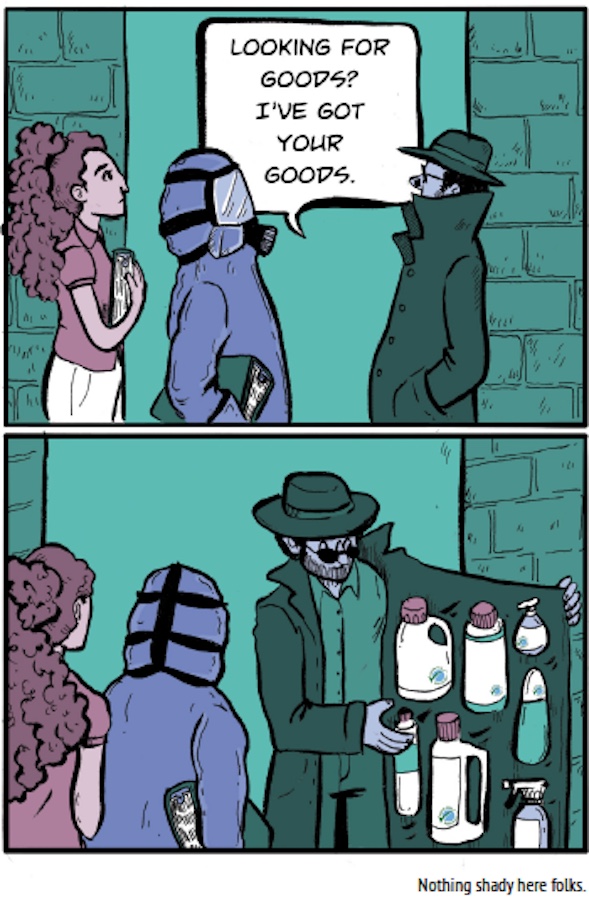Cleaning products can be “green”: getting to informed substitution
Lots of workplaces and individuals are looking for “green” or sustainable cleaning products. Unfortunately, the ingredients in many products still include sensitisers, reproductive toxins, endocrine disruptors, caustic chemicals or persistent bioaccumulative toxic substances (PBTs).
At the same time, it’s often confusing to figure out what will harm people and/or the environment. And in workplaces, those who pay attention to health and safety usually have nothing to do with those who purchase things. Health and safety committees make recommendations with no influence on procurement policies.
A 2014 Worksafe BC-funded project overcomes these difficulties. It ties together purchasing practices, health and safety committees and on-line databases that provide information about chemical hazards and informed substitutes for cleaning and other products.
There are step-by-step instructions about using on-line databases to get information about the chemical hazards and cleaning products (Chemhat, Risctox, Pharos) and to find informed substitutes (Ecologo, Green Seal, SF Approved, EPA’s Safer Choice, the Toxic Use Reduction Institute (TURI) Cleaning Laboratory and microfibre materials), listing upsides and downsides of each. And there’s an audit form/checklist for health and safety committees and resources for workplaces, purchasing staff and individuals. The appendices list all kinds of resources, for homes and workplaces.
Tools for informed substitution. How do you find safer chemicals for the workplace? is available as one document or by sections:
- Section 1 Chemicals matter
- Section 2 From the right-to-know to the need to act
- Section 3 Checking on chemicals of high concern
- Section 4 Finding safer substitutes
- Section 5 Buying safer cleaning products
- Section 6 Keeping the workplace healthy and safe
- Appendices More resources about hazardous chemicals and informed substitution
For more about green chemistry, informed substitution, and the toolkit, check out:
- Tools for informed substitution.Presented to the National Institute for Occupational Safety and Health (NIOSH) Services Sector Council, 2019
- Cleaning our schools: Getting products good for our health. Workshop presented at the New Jersey Education Association’s 2019 convention.
- Cleaning schools without making people sick – avoiding toxic products — an article written for school custodians and others
- Tools for informed substitution. (Everything you wanted to know about replacing that toxic graffiti cleaner, and more). Presentation at the 2nd International Symposium on Alternatives Assessment: Building the field, Sacramento, 2018
- When is it “green”? Preventing the toxic effects of spray foam insulation, Presented at the New York State Green Building Conference, 2017 (with Greg Siwinski and Jim Vallette)
- Is it necessary Going for the gusto with green chemistry, Presented at the Canadian Association for Research on Work and Health (CARWH) conference, 2014


